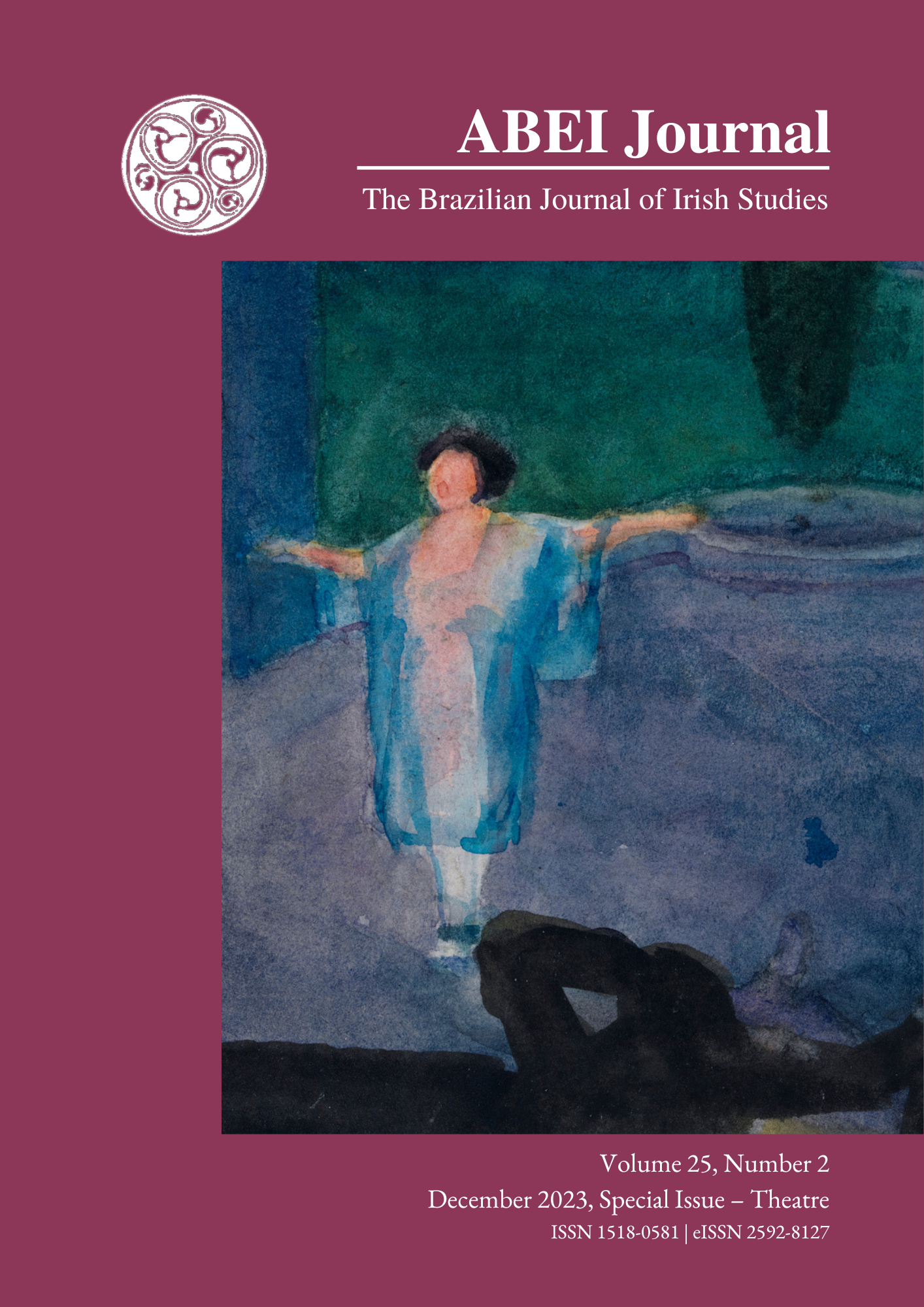Espaço, lugar e identidade em The Tragedy of an Elderly Gentleman de Bernard Shaw
DOI:
https://doi.org/10.11606/issn.2595-8127.v25i2p149-163Palavras-chave:
Bernard Shaw, Absurdismo, Espaço, Identidade, Irlanda, Back to Methuselah, The Tragedy of an Elderly GentlemanResumo
A última das peças “irlandesas” de Bernard Shaw, The Tragedy of an Elderly Gentleman (1921) levanta as mesmas preocupações sobre colonialismo, nacionalismo e identidade exploradas em John Bull’s Other Island (1904) e O’Flaherty V.C.: A Recruiting Pamphlet (1915), mas o faz fora de seu estilo dramático preferido, o realismo teatral. Nesse experimento proto-absurdista, Shaw inventa uma Irlanda em que as diferenças de religião, classe e política são discutíveis; em 3000 d.C., a idade é a única categoria de distinção social. Experimentando a forma dramatúrgica e evitando o design cênico mimético, Shaw utiliza a selvageria mítica da Irlanda e o efeito transformador de seu clima como um elemento afetivo do argumento da peça. Por meio do tratamento dado por Shaw ao espaço, essa Irlanda do futuro, com seus habitantes inerentemente irlandeses, torna-se o lar utópico de uma raça superior que pressagia uma vida além da opressiva realidade binária partidária britânica/irlandesa e, mais tarde, intranacional, da Irlanda pós-Primeira Guerra Mundial e pré-Estado Livre.
Referências
Gahan, Peter. “John Bull’s Other War: Bernard Shaw and the Anglo-Irish War, 1918-1921,”
Shaw, vol. 28, Penn State University Press, 2008, pp. 209-38. https://doi.org/08.4824/shaw.28.1.0209.
Lefebvre, Henri, and Donald Nicholson-Smith. The Production of Space. Blackwell, 2009.
Moran, James. “Meditations in Time of Civil War: Back to Methuselah and Saint Joan in Production, 1919–1924.” Shaw, vol. 30, Penn State University Press, 2010, pp. 147–60, https://doi.org/10.5325/shaw.30.1.0147.
Morash, Christopher, and Shaun Richards. Mapping Irish Theatre: Theories of Space and Place. Cambridge University Press, 2013.
Mulhall, Ed. “‘Common Sense’ and the War: George Bernard Shaw in 1914.” Century Ireland, 2014, www.rte.ie/centuryireland/index.php/articles/common-sense-and-the-war-georgebernard-shaw-in-1914.
Roach, Joseph. “‘All the Dead Voices’: The Landscape of Famine in Waiting for Godot.” Land/Scape/Theatre, eds. Elinor Fuchs and Una Chaudhuri, University of Michigan Press, 2002, pp. 84–93.
Shaw, Bernard. “Common Sense About the War.” The New Statesman, 14 Nov. 1914. HathiTrust, babel.hathitrust.org/cgipt?id=mdp.39015011289694&view=1up&seq=3.
Shaw, Bernard. “How to Settle the Irish Question,” in The Matter with Ireland, eds. Dan H.Laurence and David H. Greene. Hill and Wang, 1962, pp. 140-163.
Shaw, Bernard. The Complete Works of Bernard Shaw. Odham’s Press Limited, 1934.
Shaw, Bernard. The Complete Prefaces, Volume 2:1914-1929. Ed. Dan H. Laurence and Daniel J. Leary. Penguin Press, 1995.
Tuan, Yi-Fu. Space and Place: The Perspective of Experience. University of Minnesota Press, 2018.
Downloads
Publicado
Edição
Seção
Licença
Copyright (c) 2023 Justine Zapin

Este trabalho está licenciado sob uma licença Creative Commons Attribution-NonCommercial 4.0 International License.


